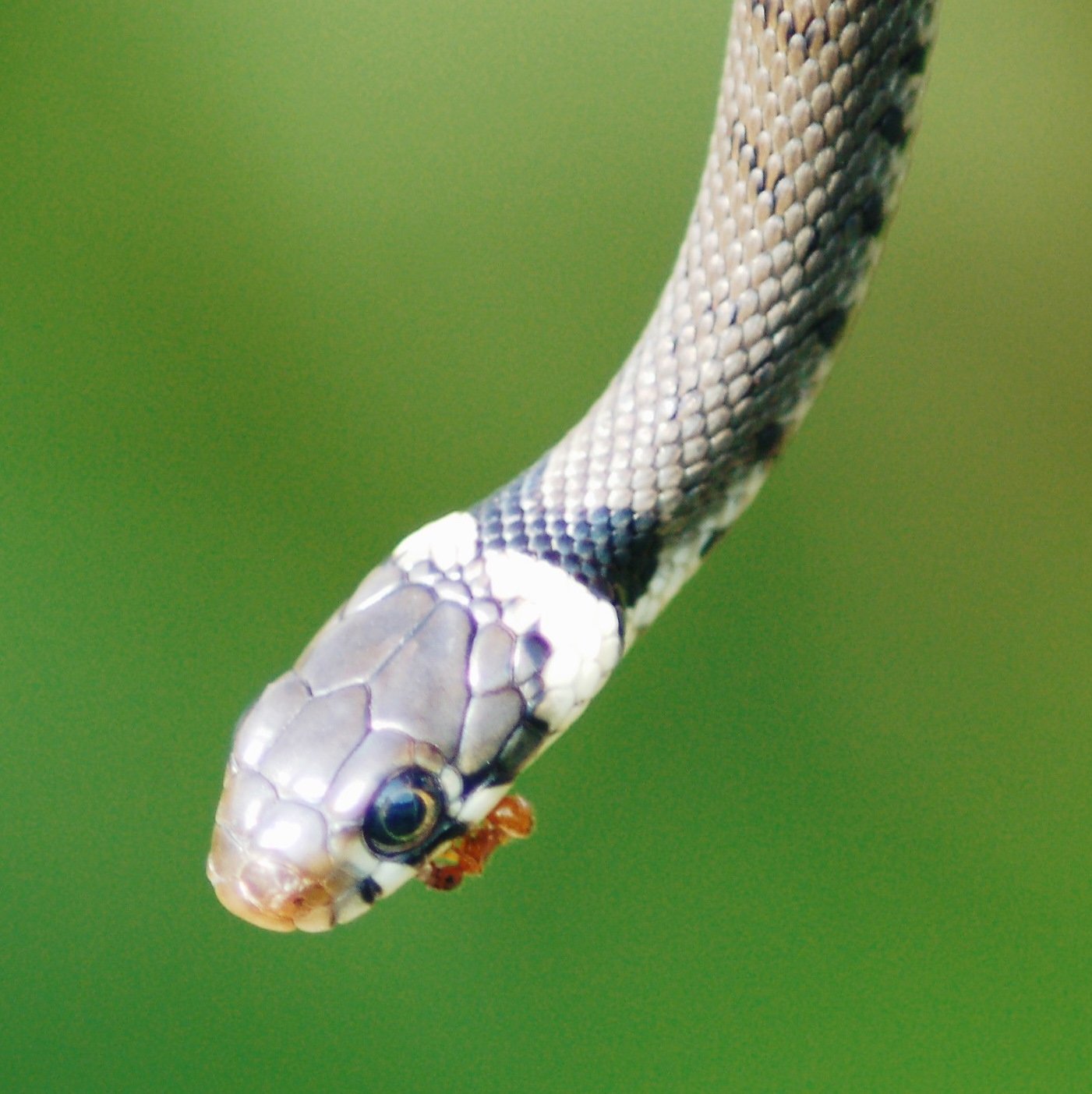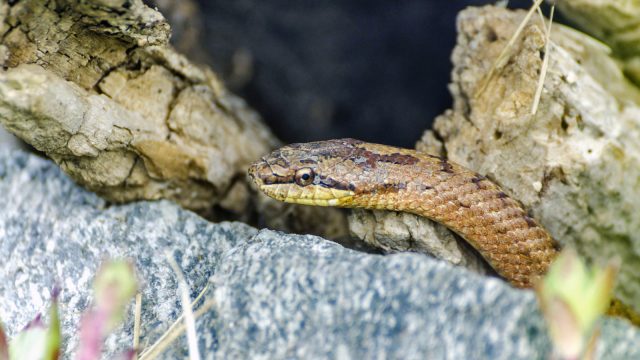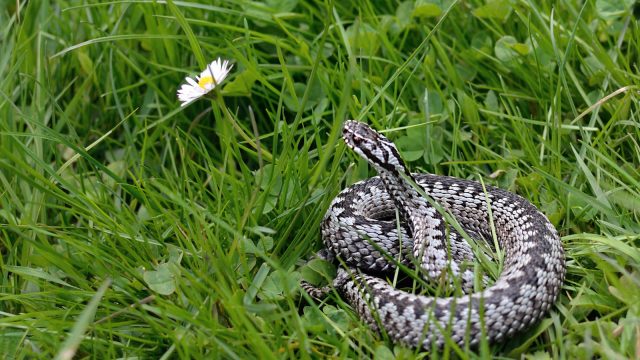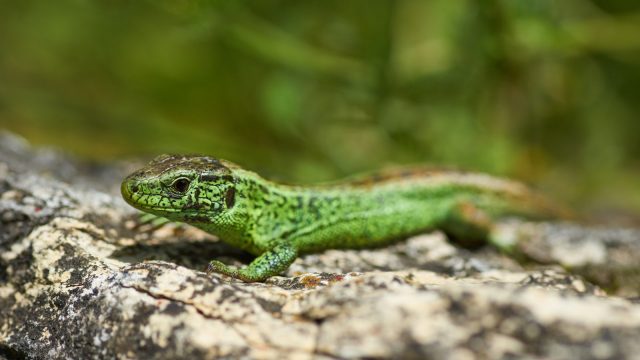This non venomous snake is Britain’s largest native reptile. It can often be confused with the Adder, but can be distinguished by its colouration and markings, adult body length and pupil shape. Unlike the Adder the grass snake is non-venomous and harmless to humans.
Identification
There are several colour variations associated with the Grass Snake but the most common is olive green with black bars running along its body length and a white or creamy underside. The grass snake has a distinctive black, yellow and white band that appears as a collar separating the body and head. The pupil is large, dark and round unlike the Adder which can be distinguished by its slit shaped pupil and red eye. This feature, in theory, can be used as a useful identification feature, although if you are able to spot a slit shaped pupil and red eye you’re probably a bit too close to an Adder.
The Males of this species are slightly shorter than the females when fully grown; they can reach 100cm compared to the females 130cm. Older females can be distinguished as they often lack the white part of the collar crescent.
Overview
Grass snakes favour a habitat that includes long undisturbed grass and a standing body of water, a pond or lake, where they can fill up on their main prey of amphibians, mainly frogs and toads. Britain’s climate is not hot enough to sustain the grass snake through the cold winter months and like our other native reptiles they hibernate from October to March, emerging again when the sun is strong enough to supply them with energy for hunting and breeding.
The females lay anywhere between 10 and 40 eggs in March which they incubate in a carefully chosen burrow for nearly three months. The young grass snakes are independent shortly after birth; their vulnerability makes them easy prey for larger predators and explains why the females lay so many eggs.
Grass snakes are harmless to humans as they have no venom, in the event that they become cornered they may appear seemingly aggressive by hissing and arching their necks. It may be reassuring to note that there bark is worse than their bite as they will more often than not curl up and play dead if handled (although this task should be left to the experts).
Despite being our largest native reptile the grass snake is seldom seen, they are shy creatures who prefer not to be noticed. They judge from vibrations the presence of threats such as humans and promptly disappear. The best way to spot a grass snake is to find an area of suitable habitat, be very patient and very quiet. On sunny days they are more likely to be spotted as they bask in a warm position.
In The Garden
If you have a pond in your garden or nearby you may be able to tempt a passing grass snake by providing one or all of the following requirements: a suitable hunting ground, an area for sunbathing and an area for burrowing. Dead wood piles, compost heaps and tin sheets are all areas that could fulfil the role of sunbathing and burrowing. Patches of long grass, damp shaded sites and rockeries are excellent ways to attract frogs and toads to your garden and in turn possibly a hungry grass snake.
Did you know?
Grass snakes are ambush hunters, they lay in wait for unsuspecting prey to pass, then grab and swallow it whole. An adult Grass snake can survive for a whole year on only 10 frogs. They are also accomplished swimmers able to dive for up to an hour in search of prey.



